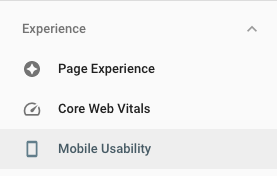
How can big data boost your B2B blogging efforts? It has long been an influential force in many industries. For example, it has helped airlines to more accurately predict ETAs. It has been used in the healthcare industry to predict illness and and determine the best course of treatment. B2B PR is no exception.
Many predict that big data will become as integral to PR as social media — practically necessary for success. The strategic advantage you gain from big data has huge potential for B2B PR. Let’s look at how this data can improve your PR — especially when it comes to B2B blogging.
What is It?
Before you can use big data, you have to understand it. And while everyone puts their own particular spin on it, Forbes has summarized it this way: “A collection of data from traditional and digital sources inside and outside your company that represents a source for ongoing discovery and analysis.”
Big data typically encompasses the following four components, the “Four V’s,” if you will:
- Volume — This is what makes the data big. The total amount of data grows exponentially each year.
- Velocity — Because the data is so plentiful, it needs to be processed quickly.
- Variety — The data comprises any number of varieties, from numbers to pictures, to Twitter feeds…the list goes on.
- Value — This is the objective of big data. It should benefit you with insights that will help your business.
Big data opportunities abound for tech-savvy PR professionals and agencies. — Christopher S. Penn
To use big data and PR effectively, you need to have expertise in the subject, critical thinking ability, and access to the right tools. In the realm of PR, some helpful tools include Google Analytics, Buzzsumo, Cision, and Air PR, among others.
How to Use Big Data in B2B Blogging
1. Build More Effective Content Strategies
Does this world of data and analysis pose a threat to the creative process that goes into writing B2B blogs? Not at all — if anything, it only serves to move it forward.
With a steady eye and industry expertise, you’ll be able to see what this data reveals about your industry. Then, armed with this knowledge, you’ll be able to deliver fresh and even groundbreaking insights as well as a B2B blog strategy that will engage your audience and bring in new readers.
You can use a tool like Mention to monitor mentions of your company, or specific names or topics across the web and social media. See what people are talking about, and how you fit into the conversation — then use this information to improve your content strategy.
Meltwater is another tool that allows you to follow market trends and be the first to learn about stories as they emerge.
2. Adjust Your Message to Market Trends
Be the first in line for every trending story, hash tag, or idea. You can use collected data to determine what previously caused a market trend. You’ll then be more likely to predict when such a trend will resurface — leaving you in the thick of it.
Use Buzzsumo to see what content is trending. You can search by topic or by website — which offers you a prime opportunity to stay on top of what your competitors are doing, and then keep a step ahead.
Google Analytics is another must-have tool that allows you to track the progress of your B2B blogs and PR campaigns to see what works, where your audience is from, and what they search for on your site.
3. Embrace a New Way to Tell Stories
B2B PR is all about telling compelling stories. Buttress your story with big data that supports and enhances it
A tool like Google Trends can help you understand how a particular subject resonates around the world, and even in specific regions. Find data that will strengthen your story, and make it even more compelling.
You may also be interested in NewsWhip Spike, a paid service that shows you what content is trending worldwide, in real time. It ranks stories based on how fast a story spreads across social media, and how many social media interactions it has.
Opportunities are plentiful for big data to help you work faster and deliver greater business impact. –Christopher S. Penn
4. Use Your Expertise
The one draw-back in this world of big data and PR is that it doesn’t automatically answer the inevitable questions: Why is this data important? How does it affect my audience? But, at the same time, it gives you a prime opportunity to use your industry expertise to answer those questions. Be the first to do so and present new insights to your ever-hungry audience.
You may use a tool like CriticalMention, which monitors your brand and trending topics across TV, radio, online news, and social media. It makes it easy for you to take trending topics, and weave them into a story.
Where Does This Data Come From?
There are a number of ways that you can find data that fuels your PR engine.
First, you have internal data streams, or owned content. This may include information from your organization’s website, your branded blog, as well as company and brand pages on social networks.
Another option that enhances your B2B blogging efforts is shared data streams. This includes events, surveys and industry research that your organization has participated in, but that you do may not have exclusive right to.
Finally, you can use external data streams, such as news, academic studies, government data, social media conversations, and syndicated surveys.
Now the power is in your hands to take industry data and mold it into a valuable, insightful story. With the right tools and expertise, you have endless opportunities for growth and improvement.
Digital & Social Articles on Business 2 Community
(55)
Report Post





